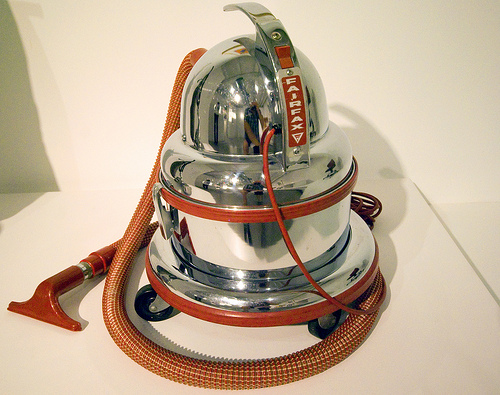 For many decades, physicians have been taught the “3 A’s” of a sound medical practice. They are the 3 qualities that their patients will value most highly, in rank order of importance:
For many decades, physicians have been taught the “3 A’s” of a sound medical practice. They are the 3 qualities that their patients will value most highly, in rank order of importance:
- Affability
- Accessibility
- Ability
Regardless of whether your professional field is medicine, law, technology or finance, that same ranking applies to how you are valued by clients, particularly in B2B businesses.
For better or worse, your clients judge you (or your firm) primarily on a personal, visceral basis. First, they must like you (“Affability”), and be confident in your commitment to them (“Accessibility.”) Your actual performance (“Ability”) will always be judged by clients on a relative basis, compared with their own knowledge of your craft, their past experience with other providers, the career risks involved in making a change, etc.
This ranking priority may seem illogical to a lawyer, fund manager or a physician whose view of the world is built on measurable evidence and tangible outcomes. But this apparent anomaly in client sentiment is supported by many real life examples. Insurance companies report that doctors who admit their mistakes and apologize to patients are rarely sued. Successful stock brokers report that they seldom lose clients for poor portfolio performance, if they are quick to explain why it happened and what’s being done about it.
Although client communication is at least as important as actual performance in most service businesses, companies seldom give that task the attention it deserves.
But for firms that understand the business impact of client communication, and have made a commitment to pay more than lip service to the discipline, the most significant challenges involve:
- Finding the proper communication frequency, channels and content
- Cutting through the vast amount of information that clients receive each day
- Applying tactics that reinforce their firm’s value proposition and differentiation
Here are a four ways to improve your firm’s client communication strategy:
Stop Guessing About What Clients Think: One of the most obvious yet overlooked ways to maintain and strengthen communication with clients is to ask them for their opinion. Legendary New York City Mayor Ed Koch constantly asked his constituents, “How am I doing?” And it was more than a political gimmick, as Koch always listened to their responses, and applied what he learned to improve his performance and reputation.
You can measure client sentiment on an informal basis, similar to Ed Koch; but you’re more likely to yield meaningful results if you conduct a formal survey either online and / or by telephone. Online platforms like surveymonkey.com make it easy to design, conduct and evaluate a client opinion survey. You can conduct phone interviews yourself, or engage a 3rd party.
There’s a widely used survey methodology that yield “Net Promoter Scores,” designed to measure client loyalty; but for most small firms, you really only need to ask three questions: 1. Are we meeting your expectations? 2. If not, why not? 3. How else can we add value to our relationship? The responses will likely provide some basis on which you can measure client sentiment and make beneficial changes. But the intrinsic marketing value of any opinion survey – regardless of the questions or response rates – is that it lets clients know you care about them.
Consistency and Speed of Communication Matter: The cornerstone of your client communication strategy should involve regularly scheduled contact; ideally on a quarterly basis, and provide content that’s of genuine interest to them. This does not include your performance / activity reports; news that touts your firm’s “Best of [fill in the blank] Award;” its 4 recently hired employees; or the results of last month’s employee 5k mud run. It should include viewpoints and guidance that’s not self-serving, and helps your clients to succeed. For scheduled contact, consistency also matters. Using floor broker lingo, this is a “Fill or Kill” decision, so either commit to scheduled client outreach, or don’t start a program.
Your firm should also be prepared, on an opportunistic basis, to communicate with its clients when there is some (internal or external) material event that may cause them to be confused, concerned or excited. This is a critical part of what “accessibility” means: that you’re always thinking of your client’s welfare. Whether it’s a 500-point drop in the Dow Industrials, or a new scientific discovery related to their business, you need to reach out to your clients – by email, phone, text, snail mail – as soon as possible to deliver the (bad or good) news. Ideally, you’ll also be in a position to help them avoid, adjust to or benefit from the information you provide.
Personalize Your Client Communications: Small firms have a significant marketing advantage, because it doesn’t take very much effort or expense to add a personal touch to their communications with clients. For starters, your firm should know and track personal information of key individuals, including their birthday, spouse / partner’s name, children’s names and ages, hobbies, favorite sports teams, etc. No detail is unimportant.
An old adage, “People don’t care how much you know, until they know how much you care,” rings true across all lines of business. The more information you have about the personal lives of your clients, the better prepared you’ll be to have conversations about what’s most important to them, and to find ways to reinforce your long-term relationships. Ask about their trip to Belize. Send them a handwritten note when their hockey team wins the Stanley Cup, or when their daughter gets accepted to law school. Send a box of cigars when they win their club’s golf tournament. Treat them to dinner at an upscale restaurant on their 10th wedding anniversary. As long as your efforts are genuine, clients will remember, appreciate and reciprocate in terms of loyalty.
Think Outside the Box during Holiday Season: In lemming-like fashion, around the holidays most companies will send out a greeting card purchased from an online catalogue, imprinted with the firm’s name. (Many companies don’t even bother to sign their card, or to add a personal message.) Holiday season conformity can provide a great opportunity to stand out from the crowd. For example, instead of sending out a holiday greeting in mid-December, consider sending a clever Happy Thanksgiving card, which won’t get lost in the pile of December’s cards, and will avoid offending anyone, based on their religious affiliation.
Another way to stand out is to forgo the traditional cocktail party or reception, where great expense and advance planning can all be for naught if bad weather or a competing event keeps your invited guests from attending. As an alternative, host a fancy catered luncheon for your client’s entire staff at their own office location during the holiday season, where you attend and hand out the egg nog or candy canes. Or avoid the holiday madness altogether, and around Memorial Day send your clients a beach chair, boogie board or cooler (all featuring your firm’s logo) to celebrate the beginning of the summer season.
The real secret sauce of client communication for any business is to manage the effort as an opportunity rather than a necessary evil. Or in the words of Dicky Fox, fictional mentor of Jerry Maguire, from the 1996 movie of the same name:
“The key to this business is personal relationships.”
Make that your own mission statement, and watch your business grow.










